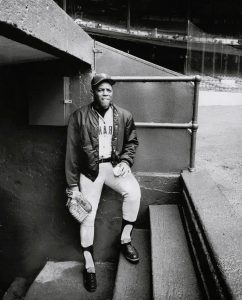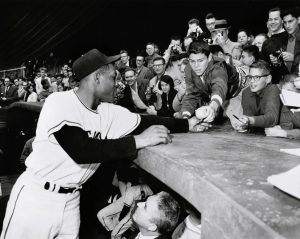Willie Mays cause of death: Mays, hey kid, was the exuberant embodiment of a complete player’s game. Some people say he was the greatest of them all.

Willie Mays cause of death : baseball’s electric player of power and grace, has died at 93
Willie Mays, the Spirit center fielder whose brilliance at the plate, in the field and on the basepaths for the Giants led many to call him the greatest all-around player in baseball history, died Tuesday in Palo Alto, Calif. He is 93 years old
Mays, the oldest living member of the Baseball Hall of Fame, died in an assisted living facility, Giants President and CEO Larry Baer said.
Mays compiled impressive statistics in 22 National League seasons with the Giants in New York and San Francisco and made a brief return to New York with the Mets before a stint in the Negro Leagues from 1948-50.
But he did more than express the complete ballplayer. An exuberant style of play and a flamboyant personality made Mays one of the game’s and America’s most charismatic figures, a name that even those far removed from the baseball world instantly recognized as a national treasure.
Charles M. Schulz was such a fan that Mays often brought up the name in Schulz’s “Peanuts” comic strip. (Groucho Marx was No. 1.) In 1954, R&B group The Trainees recorded “She Hey (Willie Mays Song).”
“When I walked in, I didn’t know a lot of people by name,” Mays once explained, “so I’d just say, ‘Say hey,’ and the writers picked it up.”
Mays propelled himself into the Hall of Fame with thrilling flair, his cap flying while chasing drives or running the bases.
Baseball writer Leonard Coppett said of the young Mays, “He had an open, friendly, lively, irrepressible demeanor.” “Whatever his personal insecurities, he exuded a sense that playing ball, for its own sake, was the most amazing thing in the world.”
And New York embraced the boy from Alabama, putting him on a path with two others who ruled the city’s center field in an era when its teams dominated baseball. The Yankees had Mickey Mantle, the Brooklyn Dodgers had Duke Snyder and the Giants had No. 24, and a city not known for equality likes to argue over which team’s slugger has reigned supreme.
Mays captivated baseball fans at a time when black players were still making it to the major leagues and segregation persisted in his native South. He was respected in black neighborhoods, especially in Harlem, where he played stickball with youngsters outside his apartment on St. Nicholas Place — not far from the Polo Grounds, where the Giants played — and was treated like visiting royalty on the original Red Rooster. , one of the most popular restaurants in Harlem during its time.
President Barack Obama had Mays fly with him to the 2009 All-Star Game in St. Louis, telling him that if African-Americans like Mays and Jackie Robinson hadn’t changed attitudes, “I’m not sure I’d be elected. The White House.”
Mays and Yogi Berar, who were cited posthumously, were among 17 Americans whom Mr. Obama honored with the Presidential Medal of Freedom, the nation’s highest civilian award, in a White House ceremony in November 2015.

Willie Mays cause of death: power and speed
Mays played center field with courage and favor, his basket catches made at the hip, symbolic the power and exactness of his throws. His over-the-shoulder catch to drive into deep center field at the Polo Grounds against the Cleveland Indians (now the Guardians) in the 1954 World Series — followed by a sensational throw to 2nd base — is remembered simply as “The Catch.” ”
Branch Rickey, the executive who helped break the modern major league color barrier by signing Robinson to the Dodgers, extolled the young Mays in his book “The American Diamond” (1965), “management the ball to left in an electric flash” for a home run. The ground’s scoreboard faces the upper deck of the field.
Even after the Giants and Dodgers moved to California in 1958, Mays became a hero in the West. Although he initially received a lukewarm reception from the San Francisco fans, he thrived playing for them despite the high winds and cold nights at Candlestick Park.